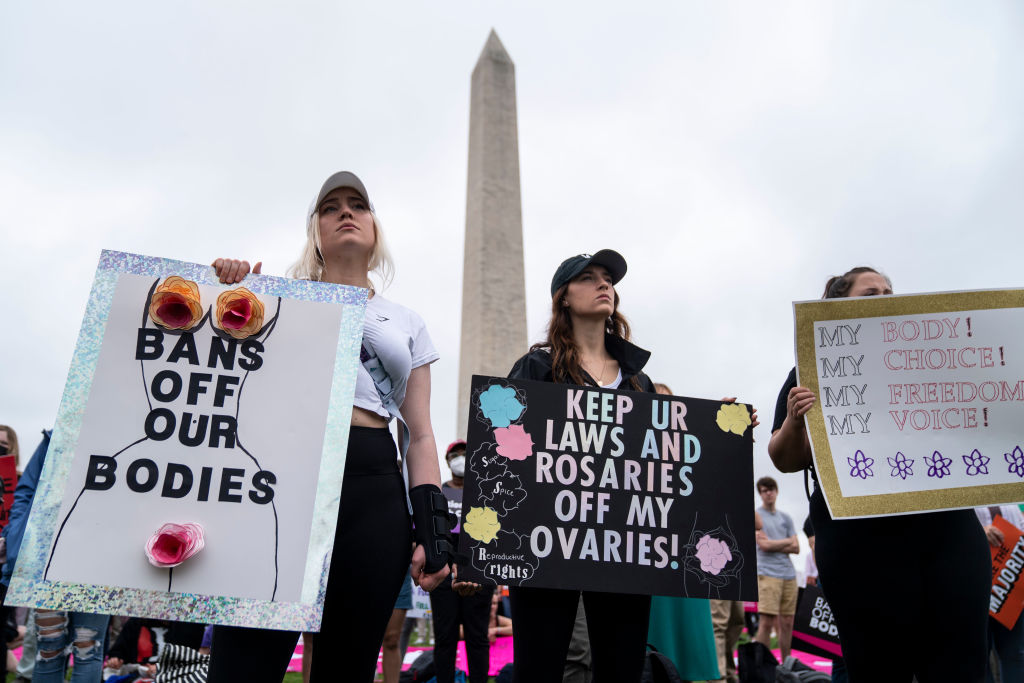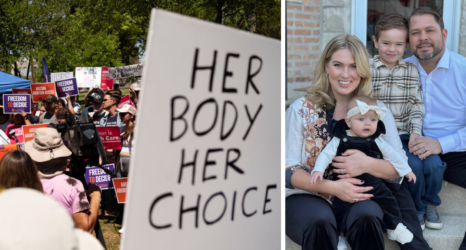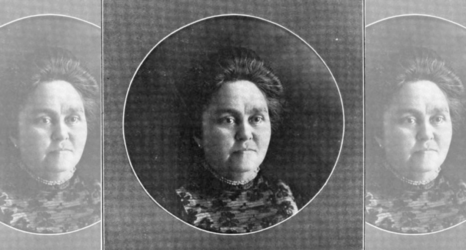When unwanted children inevitably get swept into the school to prison pipeline, it is often the conservative, pro-life camp, who lead the charge to “lock them up and throw away the key.”

During the 16 years I spent as a death penalty lawyer, I had considerable time to contemplate the fate of unwanted children. As adults, some of those children have been my clients on death row. It turns out, society didn’t want them either. When their lives careened off a cliff—as sometimes happens to unwanted children—they hurt people, usually after enduring years of pain and trauma themselves. When they turned their pain outward, taking the life of another, society concluded they weren’t worth saving.
This April marked the six-year anniversary of one of my client’s executions. Every spring, I am gripped by flashbacks of the days, hours and minutes leading up to his execution. Plagued by the knowledge that his loved ones, who knew him as much more than the worst thing he’d ever done, are still grieving their loss. Haunted by questions about whether there was anything else I could have done different, better, that would have saved him. This year, the grief I carry came with a new sense of dread.
Roe v. Wade has helped lift women and families out of poverty. And it has helped ensure that more of the children born over the last five decades were wanted children.
With the recent leak of the Supreme Court’s draft decision in Dobbs v. Jackson Women’s Health Center, the overturning of Roe v. Wade appears imminent. In Dobbs, the Court will decide whether Mississippi’s new law banning most abortions after 15 weeks passes constitutional muster. Spoiler alert: It doesn’t—under Roe, and the subsequent case, Planned Parenthood v. Casey, unless a constitutionally permissible restriction applies, women may terminate a pregnancy up to viability, determined as occurring around 24-26 weeks.
Roe v. Wade has protected the right to terminate unwanted pregnancies for nearly 50 years. Protecting women’s bodily autonomy is, by itself, critically important. But Roe represents so much more. It has helped lift women and families out of poverty. And it has helped ensure that more of the children born over the last five decades were wanted children.
Maybe you’re thinking these things, abortion and the death penalty, have nothing to do with the other. But the issues are bound up in ways you might not realize. And it’s part of why the prospect of the Supreme Court’s ruling in Dobbs is deeply troubling.
The Lay of the Land
In 1860, when Mississippi was the top cotton producer in the United States, more than half the state’s population was made up of enslaved persons. Indeed, in the run up to the Civil War, Mississippi was one of the largest slaveholding states in the nation. Of course, Mississippi is hardly alone in this shameful chapter of American history.
During slavery, Black women’s value was inextricably linked to their capacity to reproduce. The offspring of enslaved women throughout the South were, by law, considered property of the enslavers who had a vested interest in “producing” more slave labor to fill their coffers.
To spare subsequent generations from the brutality known all too well, some enslaved women utilized homeopathic techniques to induce miscarriages. These acts of resistance stem from women’s fundamental recognition that forced childbearing was detrimental to them and to the children they were forced to have.
In the decades following the Civil War and Reconstruction, the control of women’s bodies took on a new shape. Beginning around the early 1900s and continuing as late as the 1980s, an untold number of forced sterilizations took place throughout the United States, including many former Union states. These procedures took place absent women’s consent, and, in some instances, without their knowledge. In Mississippi, the practice was so common it earned the moniker of “Mississippi appendectomy.”
The current campaign to control women’s bodies comes in the form of the looming threat posed by the forthcoming decision in Dobbs. Thereafter, abortion access will be determined on a state-by-state basis, no longer afforded any federal protection. And with trigger laws set to go into effect in 13 states, not only will abortion become unattainable in some states, it will also be criminalized. In an Orwellian twist, if one Texas lawmaker has his way, abortion will be punishable by the death penalty.
From Birth to Life—and Death
Conspicuously absent from the talking points promulgated by abortion opponents is what happens to girls and women who are forced to proceed with unwanted pregnancies. And, further, what becomes of those children? The unaborted.
I can tell you what happens to some. Most of my clients were born in the years before Roe v. Wade. As such, safe, legal abortion was never an option for the women who became their mothers. Many of my clients were the result of unplanned pregnancies. Some were the result of rape and/or incest. Some were conceived within abusive relationships. And almost all arose within a culture of deep poverty.
While being the product of an unplanned and unwanted pregnancy is not, itself, decisive as to one’s life outcome, it may be a precipitating factor regarding bad things to come. Where those children receive other supports, negative effects stemming from being unwanted may be offset. I have witnessed this phenomenon in the lives of some of my clients’ siblings. The ones who escaped a worse fate and, for some reason or another, were granted a life raft. Sometimes it was a coach who identified raw talent. Sometimes a teacher who took an interest. Sometimes a family member or a neighbor who took a sibling in. Meanwhile, my clients were cast aside, forgotten or sacrificed.
In an Orwellian twist, if one Texas lawmaker has his way, abortion will be punishable by the death penalty.
Where additional supports are absent, the trajectories of unwanted children should be of concern to us all, regardless of religious or political affiliation. Which brings me back to my client. And the death penalty.
My client was from Mississippi. He was born in the late ’60s, before Roe was law. And he was unwanted. That is not to say that his mother did not love him. She did, in her way.
Nor am I saying that I think he should not have been born. The multitude of factors that contribute to poor outcomes are varied and complex. The intent here is not to evaluate all such contributing factors, but to zero in on one such factor. Does being unwanted “cause” people to become criminals? No. Such a conclusion would be both erroneous and an oversimplification of the issues.
But people navigate life with the tools they have. Some of us have been afforded many more tools than others: good educations, good nutrition, safety, stable, loving homes. Some of us get none of those things. When the only tool in your toolbox is a hammer, everything is bound to look like a nail.
When my client’s teenage mother found herself pregnant, she did not want to have a baby. But in 1960s Mississippi, her options were few. She tried a home remedy to terminate the pregnancy on the advice of a family friend who told her to drink turpentine. It didn’t work—a harbinger of things to come in her life. And, by extension, the life of my client.
In my experience, many of the people who rail against Roe are the same people who routinely vote against funding social welfare programs that support struggling families. Thereafter, those same people seem quick to condemn kids who, lacking adequate support and resources, stumble into trouble. And, when trouble mounts for those kids, sweeping them into the school to prison pipeline, it is often the conservative, pro-life camp, who lead the charge to “lock them up and throw away the key.”
By the time some of some of those kids became my clients on death row, it was, once again, the pro-life, pro-death penalty folks calling for their executions.
A World Without Roe
When Roe is overturned, there will be many more unwanted children. As someone who bore witness to the pain inflicted on and—later, by—some unwanted children, my heart aches for the families and communities who will bear its costs.
I implore abortion opponents to think about the post-Roe unwanted children. To act on behalf of those children. To earn their title of “pro-life,” by supporting community organizations that provide critical support to underserved youth. By committing to gender equality and racial justice. By voting for local measures that promote and fund maternal health programs and youth services. By advocating for more school counselors and robust training for teachers to ensure they can identify and support students who may be floundering. By educating themselves about the impact of trauma on children’s behavior and demanding that issues be addressed through a trauma-informed lens. By promoting restorative justice practices when young people engage in harmful behaviors.
In lieu of all those steps, though, if abortion opponents continue, as many have, to cease any interest in unwanted children after they’ve been born, I hope they will recognize their roles in the myriad consequences, when they begin to unfold. Whether they do or not, when the Supreme Court opinion in Dobbs drops, we will all be faced with those consequences soon enough.
Sign and share Ms.’s relaunched “We Have Had Abortions” petition—whether you yourself have had an abortion, or simply stand in solidarity with those who have—to let the Supreme Court, Congress and the White House know: We will not give up the right to safe, legal, accessible abortion.
Up next:





